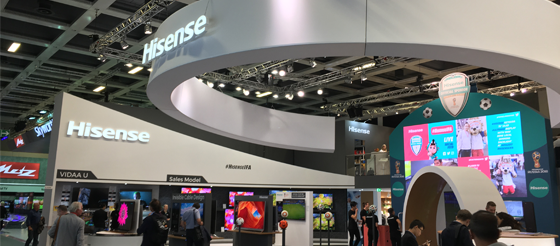With Black Friday upon us, it is vital retailers now maximise the huge sales opportunities that exist. With money to spend, from savings accumulated over lockdown and no holidays, customers are getting ready to go for a bumper spending period up to Christmas.
After all, UK consumers are estimated to have saved around £200bn over the various lockdowns, while 54% of those savers are ready to spend it on Black Friday and Christmas according to a recent survey by Future plc. Furthermore, over 70% of customers suggest that they would have the same amount or more money to spend on Black Friday in 2021 as in 2020 (PPA). Combine this with store doors wide open, we look set for increased customer footfall and sales figures.
However it is important to strike a note of caution, as there are some warnings of issues that could dampen the mood this year. Further Pandemic related problems could arise of course, a fresh wave has broken out across Europe, along with truck driver shortages and global supply chain disruptions that may delay goods arriving to the UK over the next few weeks.
It is the second year in a row where such implications have been highlighted. It is becoming clear that consumers are hearing that call, a recent Ebay survey showed that 41% of shoppers will have aimed to have got their Christmas shopping done before December even begins, as opposed to just 25% last year. Therefore acting now to make the most of the opportunity on Black Friday is critical.
The traditional view of Black Friday is perhaps long queues outside shops and big price drops for retailers. While that has certainly changed during the pandemic, we must not dismiss the benefit of Black Friday’s appeal and hype to lure customers in store/online. Black Friday just needs to be treated a little differently.
Black Friday shouldn’t be simply about heavy discounting – consumers want to be satisfied with the shopping experience (online and instore) and the products they are buying. Last year we were denied physical sale shopping, and with Christmas shopping earlier than ever, retailers should be prepared to come armed with the right product information.
Training is vital for Christmas staff, as is continual reviews of ecommerce sites – to ensure a quality experience not just one based on price point. Price drops on their own will not sustain footfall – but quality, personalised experiences in store and online will.
Retailers should take note of the growth of Singles Day, the way the shopping experience has become a form of entertainment, where social media, ecommerce sites all build up excitement along with key social media influences via live streaming. In the UK, it can be tempting to slash prices on Black Friday or even in the lead up to it and let the price do the talking. But without clever marketing online or in store, relevant and engaging social media and ultimately a smooth online/in store experience – where staff know their products and stock the experience will not be as thrilling.
Customers like a bargain, it may get them over the door, but at a time when every customer matters, it’s important to build brand loyalty and get a repeat visit in the run up to Christmas. Retailers must be aware that while discounts are the foundation of Black Friday, it’s the excitement, marketing, brand experience and ultimately the store or online journey that will sway a customer from perusing to purchase. Once the customer is through the door, or on a retailer website – conversion becomes experience based.
As retailers ramp up their marketing efforts as we approach the peak of spending for the year, consumers are certainly going to have plenty of choice as to where to spend their budgets. Retailers will have to do all they can to make sure they stand out from the crowd. Engaging marketing, whether it be store representatives, training or merchandising activities, can ensure that the consumer knows who you are and why they should be choosing your products. Once that is achieved then loyalty and success will follow.
By Hannah Snoeck, Client Services Director, Gekko
Article originally published by BDaily
Photo by Karolina Grabowska from Pexels


